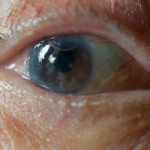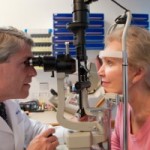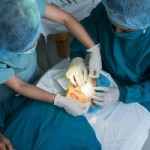

June is Cataract Awareness Month, so we have compiled our top articles regarding cataracts as well as other health issues pertaining to eyes and vision, such as rheumatoid arthritis, dry eyes, glaucoma, and dizziness. We hope you find these articles informative and adopt some useful tips to prevent eye and vision problems from striking.
 Prevent cataracts naturally: Home remedies and diet
Prevent cataracts naturally: Home remedies and dietFor most people, cataracts develop slowly and don’t disrupt the vision early on. But with time and age, this will interfere with your daily life and you’ll need eyeglasses. You may need surgery down the road, generally, a safe and effective procedure. But still…the question is how to slow down cataracts? Are there any natural remedies for cataracts? Is there a natural way to cure cataract even?
If you’re asking these questions, you’re not alone. According to the U.S. Centers for Disease Control and Prevention (CDC), an estimated 20.5 million (17.2 percent) Americans aged 40 years and older have cataract in one or both eyes, and 6.1 million (5.1 percent) have had their lens removed operatively. The total number of people who have cataracts is estimated to increase to 30.1 million by 2020. Continue reading…
 Rheumatoid arthritis, other arthritis increases dry eyes, glaucoma, cataracts risk
Rheumatoid arthritis, other arthritis increases dry eyes, glaucoma, cataracts riskRheumatoid arthritis (RA) can increase the risk of dry eyes, glaucoma, and cataracts. Rheumatoid arthritis is an autoimmune disease in which the immune system attacks the joints, causing inflammation and pain. Aside from affecting joints, rheumatoid arthritis can also impact the eyes as well.
Due to the influx of inflammation, RA can also lead to serious eye disorders. Rheumatoid arthritis has been found to increase the risk of Sjogren’s syndrome, a condition that affects the production of tears. With rheumatoid arthritis, eyes can become dry and a white haze can even form over them. If you have rheumatoid arthritis, it’s important to get frequent eye exams to catch changes or issues early on. Continue reading…
 Dizziness in patients reduced with cataract surgery
Dizziness in patients reduced with cataract surgeryOlder adults with visual impairment often report dizziness, but a recent study found that it can improve with cataract surgery. Senior author Professor David Elliott, M.D., said, “Dizziness is caused by lots of factors, but the results indicate that cataract surgery removes symptoms of dizziness for some people, so it is an important intervention to consider.”
Patients who switched to multifocal glasses after cataract surgery experienced an inhibited ability to reduce dizziness. Elliot explained, “Multifocals are very convenient, but the results of the study suggest that older, frail patients – who are at greater risk of falling – shouldn’t wear multifocals after cataract surgery if possible.” Continue reading…
 Common medication that can help improve your vision
Common medication that can help improve your visionHigh cholesterol is a growing problem in America, with 73.5 million Americans living with it. Having high cholesterol is linked to a slew of other health problems, including a higher risk for heart disease.
A common form of treatment for cholesterol is the use of statins, which are a medication to help lower LDL cholesterol. Statins work by blocking the substance that your body needs to produce cholesterol. Additionally, they help your body reabsorb cholesterol, which has formed plaques along the lining of your arteries.
New research suggests that cholesterol-lowering statins may have an additional benefit, and it has nothing to do with your heart. Continue reading…
 New chemical in eye drops may clear up cataracts
New chemical in eye drops may clear up cataractsA new chemical that can help clear up cataracts when added to eye drops has been found. Cataracts are the leading cause of blindness, and the teams from UC San Francisco (UCSF), the University of Michigan (U-M), and Washington University in St. Louis (WUSTL) uncovered this new form of treatment during a recent study.
The World Health Organization has deemed cataracts a “priority eye disease,” as it affects nearly 20 million people worldwide. Cataracts can be removed through surgery, but that process can be costly.
The new chemical is the first soluble version that can be added to eye drops as an effective means of treating cataracts.
Cataracts mainly arise due to aging. They are caused by the clumping together of proteins – crystallins – similar to Alzheimer’s or Parkinson’s disease. Crystallins are part of fiber cells that make up the eye’s lens. Co-senior author Jason Gestwicki, Ph.D., said, “Shortly after you’re born, all the fiber cells in the eye lose the ability to make new proteins, or to discard old proteins. So the crystallins you have in your eye as an adult are the same as those you’re born with.”
For proper function, crystallins must maintain transparency of fiber cells and flexibility. This is possibly due to proteins known as chaperones, which Dr. Gestwicki describes acting “…kind of like antifreeze, keeping crystallins soluble in a delicate equilibrium that’s in place for decades and decades.” Continue reading…
Copyright © www.orthopaedics.win Bone Health All Rights Reserved